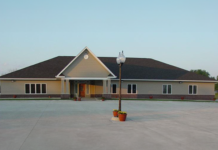If you are opting for a vintage, old fashioned style bathroom suite you will probably choose a pedestal-type sink. The shapely silhouette of a pedestal sink sits beautifully alongside a freestanding roll top cast iron bath and traditional style toilet.
Before looking at the different types of pedestal wash basin it is worth pointing out the main downside to the genre. By definition the style does not have any under sink storage unlike most wall or top mounted basins and vanity units. As well as the lack of under basin storage there also tends to be very little counter space around them. Another issue is that it can be more difficult to clean behind and under the sink as there is often a relatively narrow gap to the wall.
Assuming you are attracted to the aesthetically pleasing look of the pedestal sink, what are the other considerations? Before you purchase remember that by replacing a vanity or larger unit then some work will be required on the flooring or trim behind the formerly closed structure (like skirting board). The pedestal will reveal more of the floor and wall than you think and this could require a lot of work in terms of matching up newly revealed surfaces.
A pedestal sink typically comprises two pieces, the sink itself and the pedestal column beneath it. The basin will be partly attached to the wall as well as to the pedestal and both help hide the pipework and fittings. You should also consider the pre-drilled holes for the taps which are usually either eight to twelve inches apart (widespread) or four-inches (centre-set).
The bowls come in a wide variety of shapes, sizes and depths. If it is too shallow then washing hands and faces will more likely result in water splashing onto the floor. If the basin is in a bathroom with a lot of regular use, then ensure there is some space for toothbrushes, soap, hairbrushes and other little necessities as there won’t be any room under the basin for these. In a smaller bathroom the bowl size will need to be appropriate to the space available, whereas in larger bathrooms it is not uncommon to see his n her’s double pedestal sinks!
Regarding the pedestals, they need to match with the style of the bowl and as there are all sorts of widths and fits it is worth viewing many different styles. Taller people might also be happier with a 34inch (86.5cm) or 36inch (91.50cm) height pedestal.
As with bathtubs, basins can be made from a variety of different materials so you will need to make sure that these matches or complement other bathroom suite items. Common materials for making basins include:
- Composite materials – comprise acrylic resins and ground materials producing a solid color and a tough durable finish
- Enameled cast iron – these are chip resistant, easy to clean but tend to be quite heavy so may require extra support
- Enameled steel – this looks like cast iron but is made by spraying enamel on die cast sheet metal at high temperatures. Lighter than cast iron they are prone to chipping.
- Cast Polymer – resin mixed with ground marble, this stone effect is extremely durable and easily molded so the basin can be made in many different styles.
- Stainless steel – the quality can vary quite a bit depending on thickness and nickel content. It is easy to clean and durable but cheaper versions can be prone to denting and scratching.
- Stone – either a composite of crushed stone or made from marble, granite or onyx. Very heavy and durable but may require resealing from time to time
- Chinaware – made from clay fired at a high temperature and often with a highly decorative pattern as pictured below. It won’t discolor or corrode but can get chipped if hit by a heavy object
With so many materials and styles to choose from, an elegant looking traditional pedestal sink can help you produce a truly stylish and fashionable bathroom, which in turn could increase the price of your home – a no brainer!

































